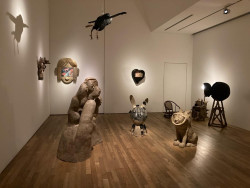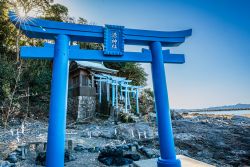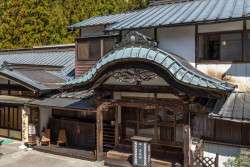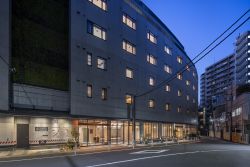
Originally published on metropolis.co.jp on January 2014

Getting fit can be a painfully monotonous undertaking if we fall into the trap of believing it has to be that way, but the treadmills and weight rooms of your local gym aren’t the only option. Combat classes are one way to have fun and gain new skills and confidence while shedding those pounds. Tokyo has a wealth of options to suit anyone willing to try something new.
A first-time visit can be intimidating, so to give you an insight into the inner workings, writer Cal Widdall attended three types of the many different classes available in central Tokyo: boxing, Krav Maga and Brazilian jiujitsu. Grab some water and a towel and come along—just keep alert or you’ll find yourself thrown to the mat.
BOXING
For a boxing class, I went to recently opened Club 360 in Roppongi. The instructor, Jan, is also the head boxing coach for Tokyo’s Executive Fight Night. His profile reads like a Wikipedia list of combat types, having tried his hand at more fighting styles than most people probably know exist. His main sport is kickboxing, which he began at age 14, and he’s fought a total of 28 professional bouts. Besides the boxing class, Jan also runs classes for kickboxing, ladies kickboxing and kick-fit.
All levels of ability are welcome at the classes, which are tailored to the experience of the people attending. The majority of people that go have no previous fight training and are there to improve their fitness, though opportunities to spar are available if trainees are willing. Jan emphasizes the importance of teaching technique so his students will be able to defend themselves should the need ever arise, but the main focus is on improving fitness.
To begin the session, a rope ladder was unravelled and laid on the floor. The six of us in attendance warmed up by running along it, quickly placing our feet in various combinations inside and outside the boxes. Stretches were performed as a group, then we began to shadow-box before eventually putting on the gloves and doing some pad work with partners. There was no drill instructor style yelling, but Jan’s mellow Canadian voice was ever present throughout the class, calmly offering encouragement and guidance.
The most challenging part of the class was a ten-minute section of alternating minutes between bag work (hitting the punching bag with set combinations of punches) and burpees. Though it was tough, we were able to work at our own pace and substitute burpees with squats or lunges if unable to complete the set.
As the time approached one hour, the session was brought to an end with some ab exercises and “step-punching”—walking forward in a manner that involves throwing combinations in time with our paces.
Other places you can try boxing: Imaoka Boxing Gym, Shibuya; Ozaki Boxing Gym, Shibuya
KRAV MAGA

“Krav Maga is a business now,” Boaz Hagay explains, “but I’m no businessman.”
Hagay teaches a pure form at his Imi Krav Maga (boaz.ikm@gmail.com) lessons, the same techniques he was once taught by the martial art’s founder, Imi Lichtenfield. Before the class, he produces a treasure trove of Krav Maga history contained in a plastic file: pictures, letters and an old, faded training manual from his days studying in Israel. He laments the simplification of the discipline for marketing purposes and when he talks about his own teaching style, he often refers to what the Japanese call budou, or “the way.”
Hagay has no time for other, “sporty” forms of combat, fighting techniques artificially restricted by rules and regulations. If you need to defend yourself, he believes, you should do it in the most effective way possible: clawing at eye sockets and kicking at testicles if necessary. “Krav Maga isn’t brutal, but it’s very violent,” he says.
As it’s late December, a smaller group than usual has shown up—myself and three other men who’ve been training with Hagay for an average of around a year. Most of Hagay’s students are foreigners, but having lived in Japan for 25 years he’s also comfortable teaching in Japanese. The room used for training is small, with a colorful mat and a set of animal curtains that the group jokes are traditional Krav Maga items, but—by the time you read this—Imi Krav Maga will have expanded to three other locations (in Roppongi, Yokohama and Ogikubo).
We begin with some stretches, push-ups and sit-ups before practicing a simple one-two: left jab, right jab. The couple of years I spent boxing are immediately evident to Hagay, who alters my stance and highlights the importance of not fully extending the arm as one would do in a boxing match.
“You’re not just trying to punch him; after you strike, you need to do damage on the return.”
He demonstrates a few different methods of doing so and points out that, with a fully extended arm, I’m also making myself a much easier target for opponents to take hold of.
The plastic knives and guns come out for the next section and Hagay shows us a method to counter weapons, ending with a kick to the groin.
“Judo teaches disarming methods that look more impressive,” he says, demonstrating a couple of them, “but nothing is as effective as a simple kick to a man’s testicles.” We practice the move for a while, along with some work on blocking, then I step aside to take pictures as the group performs more advanced combinations on Hagay, who dons a padded suit with “kick here” and a target circle drawn on his groin.
One student, a young Glaswegian who’s been studying for 18 months, performs a perfect flurry of moves that ends with his teacher slammed against the wall by the throat. Hagay turns to me with a proud smile, “He’s so good now.”
Other places you can try Krav Maga: Combat Sports Centre, Ikebukuro; MagaGym, Roppongi
BRAZILIAN JIUJITSU

Carpe Diem in Aoyama and Mita offers five different levels: basic 45-minute sessions of technique practice only, beginner classes where students are able to get their first taste of sparring, plus regular and advanced classes for those with experience. The fifth option is “no gi” where students learn to grapple without wearing the traditional robes. As someone barely able to pronounce jiujitsu, let alone perform it, I chose the basic class.
On the cold, wet Wednesday night I attended, there were three instructors—with a total of 27 years experience—and only three other students. While I found this level of one-on-one time with the instructors incredibly helpful, those that prefer to blend in with a larger crowd may want to attend the Aoyama school, where the average attendance is ten to 15 people.
All three instructors clearly love what they do and there was an enjoyable laid-back atmosphere throughout the class, as though everyone was hanging out rather than working. The head instructor, Iwasaki, has spent the past ten years competing all over the world and says, with quiet satisfaction, that jiujitsu is his life.
During the session, three moves were explained and demonstrated by the instructors, who then observed the students practicing the techniques with their designated partners. As I made mistakes, minor details that had seemed inconsequential during the demonstrations were highlighted and I was shown how my opponent would escape if I, for instance, failed to close the gap between their shoulder and my groin when performing an arm-bar.
No time was spent on exercises to improve strength or fitness during the basic lesson, as a separate conditioning class is given each morning for that specific purpose. From the beginning, the focus was purely on learning Brazilian jiujitsu.
Other places you can try jiujitsu: Tri-Force Jiujitsu Academy, Shinjuku & Ikebukuro; Axis Jiujitsu Academy, Matsubara; Crosspoint, Kichijoji & Shibuya; Grabaka, Nakano
The Way
Brazilian jiujitsu
Mitsuya Maeda arrived in Brazil in 1914 with the intention of spreading the Japanese judo. His disciples twisted his techniques like the arm of an opponent, evolving it into Brazilian jiujitsu. A core principle of the sport is that a smaller, weaker combatant with better technique will overcome a larger, stronger opponent with poor technique.
Krav Maga
Krav Maga, Hebrew for “contact combat,” was developed from a number of fighting styles by Slovakian-Israeli martial artist Imi Lichtenfield to defend against anti-semitic groups in Bratislava. The martial art gained commercial success after the first training center in Japan opened in Ichigaya in 2004.
Boxing
Boxing was first brought to Japan on Commodore Perry’s Black Ships in 1854, and the first pro title matches were held in 1924. Japan won two Olympic boxing medals for the first time in 2012, taking both the middleweight gold and bantamweight bronze. Due to a fixation on heavier weight clases, predominantly light Japanese boxers have struggled for worldwide acclaim. But even outside the glow of the sport’s spotlights, Japan has so far produced 76 male and 16 female world champions.







